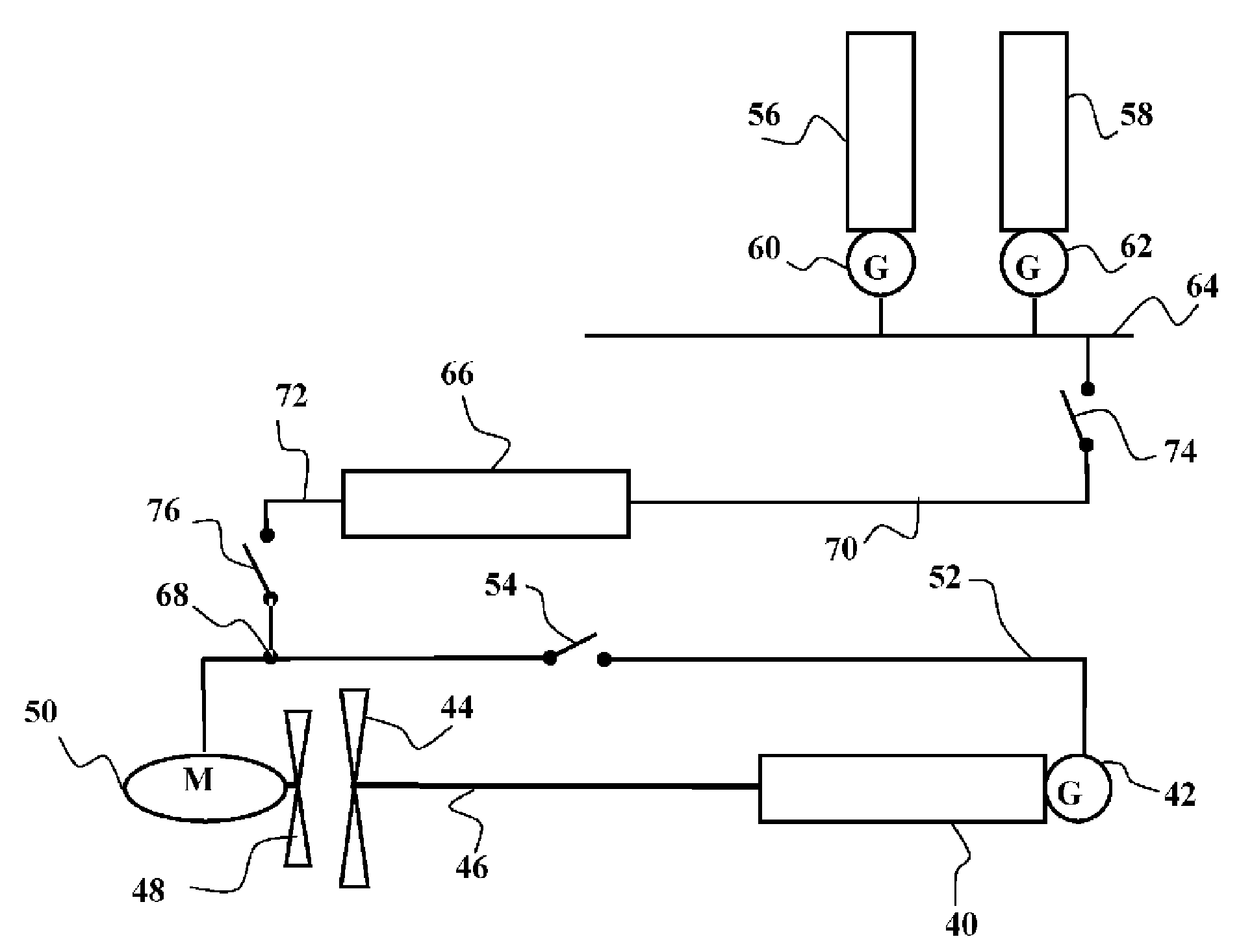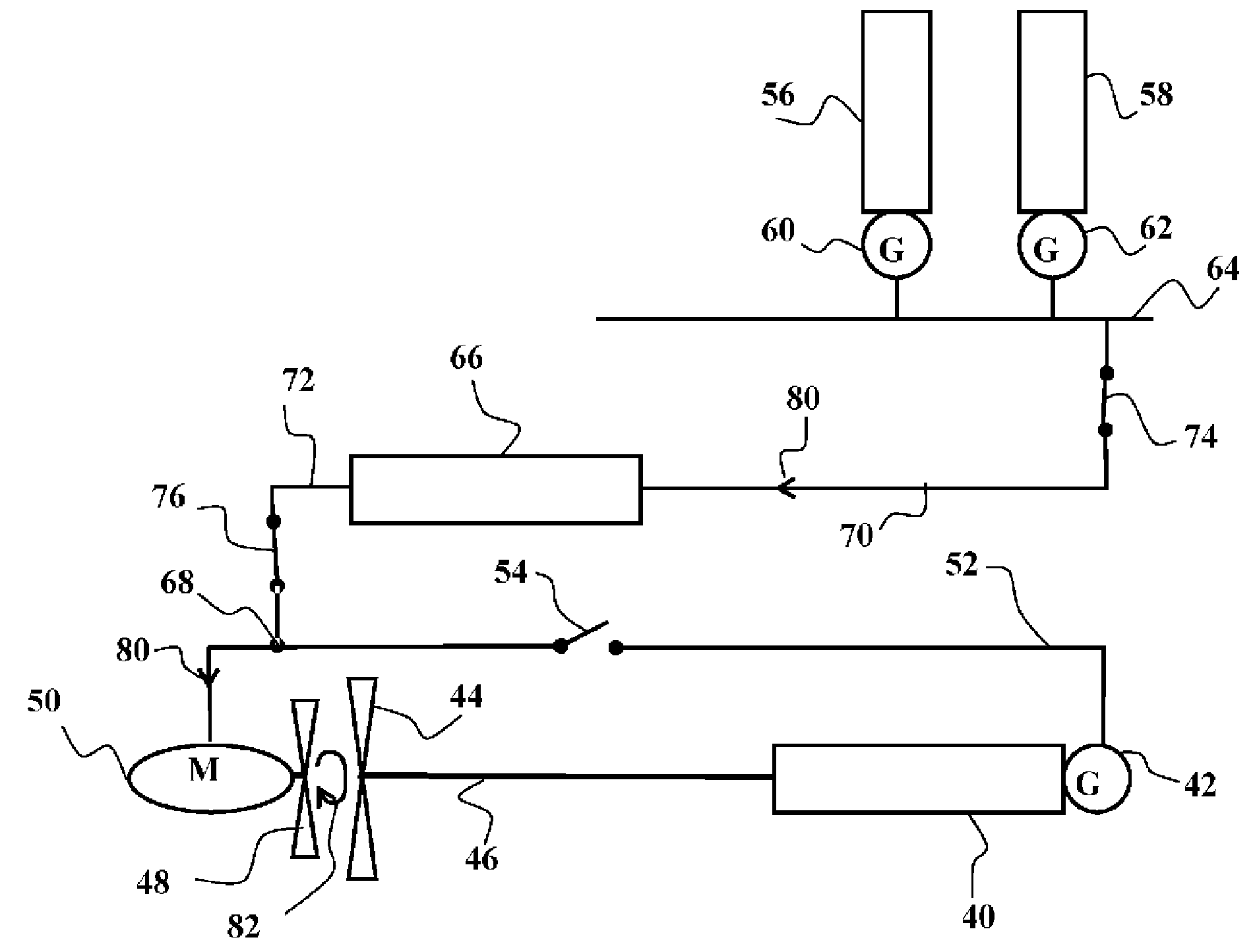Propulsion system
A propeller and electric power technology, applied in the direction of ship propulsion, propulsion components, propulsion transmission devices, etc., to achieve the effects of improved hydrodynamic efficiency, efficient ship operation, and low power loss
- Summary
- Abstract
- Description
- Claims
- Application Information
AI Technical Summary
Problems solved by technology
Method used
Image
Examples
Embodiment Construction
[0029] figure 1 A schematic diagram of a first preferred embodiment of the invention is shown. A rotating power unit 2 positioned inside the hull of a seagoing vessel rotates a generator 4 . The rotary power unit 2 is preferably a two-stroke diesel engine using oil as fuel. The rotating power unit may also be another engine using some primary energy source such as natural gas, nuclear or fuel cells. The generator 4 is connected to the output shaft of the rotating power unit 2 directly or through a gearbox. The rotational speed of the rotor of the generator 4 is thus the same as the rotational speed of the output shaft of the rotary power unit 2 or, when there is a gearbox, the ratio of their rotational speeds is defined by the transmission ratio of the gears. The electrical output of the generator 4 is connected to a propulsion motor 8 via an electrical power connection 6 . The propulsion motor 8 rotates a propeller 10 fixed to the shaft of the motor. A circuit breaker 12...
PUM
 Login to View More
Login to View More Abstract
Description
Claims
Application Information
 Login to View More
Login to View More - R&D
- Intellectual Property
- Life Sciences
- Materials
- Tech Scout
- Unparalleled Data Quality
- Higher Quality Content
- 60% Fewer Hallucinations
Browse by: Latest US Patents, China's latest patents, Technical Efficacy Thesaurus, Application Domain, Technology Topic, Popular Technical Reports.
© 2025 PatSnap. All rights reserved.Legal|Privacy policy|Modern Slavery Act Transparency Statement|Sitemap|About US| Contact US: help@patsnap.com



